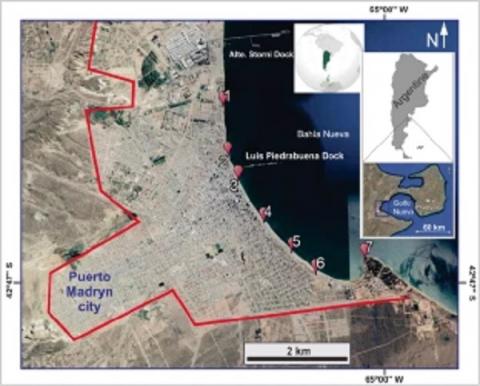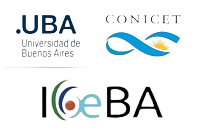M. Paula Bunicontro, Silvia C. Marcomini & Rubén A. López
2 021
Bulletin of Engineering Geology and the Environment volume 80, pages2805–2824(2021)
Puerto Madryn city (Chubut province, Argentina) has strongly increased its population since 1970, but a lack of coastal management strategies has favored physical changes in the natural landscape. This situation has led to a deficit in sediment supply sources, which increases beach erosion susceptibility.
This paper aims to evaluate beach erosion susceptibility through the use of geo-indicators. It also provides a susceptibility map based on geomorphological evidence and the weighting of physical geo-indicators. The final objective is to propose soft solutions that consider a comprehensive coastal management. The main anthropogenic disturbances identified were beach cleaning with bulldozer, coastal armoring, removal of dune fields (about 90% between 1942 and 2019), foredune segmentation, installation of resorts on backshore, and artificial rainfall drains towards the beach. The natural and most sensitive geo-indicators affected by human pressure—and thus the most useful for determining susceptibility—were foredune conservation and width, and backshore width. We estimate a high to moderate susceptibility to beach erosion along the coast of Puerto Madryn. As regards management policies, we propose mainly restoration, prevention, and adaptation strategies, such as the use of sand fences and new techniques for beach cleaning, all of which are aimed at promoting sedimentary balance within the dune-beach system. Besides these procedures, we recommend the consideration of preventive actions, such as a future-oriented urban planning and a program to raise popular awareness of coastal problems. The diagnostic approach based on a geo-indicator survey has provided a useful tool to help decision-making in coastal conservation initiatives.
This paper aims to evaluate beach erosion susceptibility through the use of geo-indicators. It also provides a susceptibility map based on geomorphological evidence and the weighting of physical geo-indicators. The final objective is to propose soft solutions that consider a comprehensive coastal management. The main anthropogenic disturbances identified were beach cleaning with bulldozer, coastal armoring, removal of dune fields (about 90% between 1942 and 2019), foredune segmentation, installation of resorts on backshore, and artificial rainfall drains towards the beach. The natural and most sensitive geo-indicators affected by human pressure—and thus the most useful for determining susceptibility—were foredune conservation and width, and backshore width. We estimate a high to moderate susceptibility to beach erosion along the coast of Puerto Madryn. As regards management policies, we propose mainly restoration, prevention, and adaptation strategies, such as the use of sand fences and new techniques for beach cleaning, all of which are aimed at promoting sedimentary balance within the dune-beach system. Besides these procedures, we recommend the consideration of preventive actions, such as a future-oriented urban planning and a program to raise popular awareness of coastal problems. The diagnostic approach based on a geo-indicator survey has provided a useful tool to help decision-making in coastal conservation initiatives.

